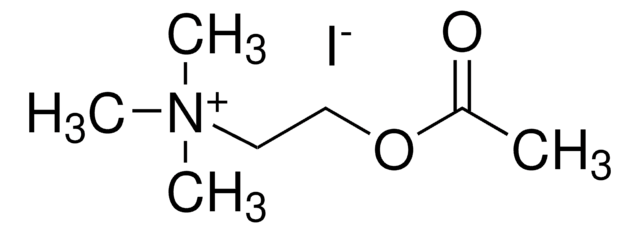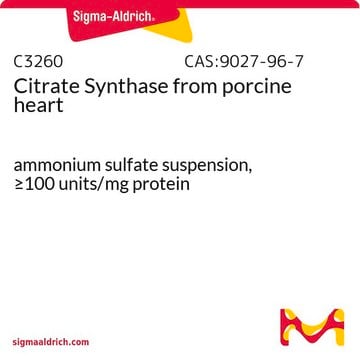Products may be shipped at a different temperature than the recommended long-term storage temperature. If the product quality is sensitive to short-term exposure to conditions other than the recommended long-term storage, it will be shipped on wet or dry-ice. If the product quality is NOT affected by short-term exposure to conditions other than the recommended long-term storage, it will be shipped at ambient temperature. As shipping routes are configured for minimum transit times, shipping at ambient temperature helps control shipping costs for our customers. For more information, please refer to the Storage and Transport Conditions document: https://www.sigmaaldrich.com/deepweb/assets/sigmaaldrich/marketing/global/documents/316/622/storage-transport-conditions-mk.pdf
D8130
5,5′-Dithiobis(2-nitrobenzoic acid)
≥98%, BioReagent, suitable for determination of sulfhydryl groups
Synonym(s):
3-Carboxy-4-nitrophenyl disulfide, 6,6′-Dinitro-3,3′-dithiodibenzoic acid, Bis(3-carboxy-4-nitrophenyl) disulfide, DTNB, Ellman’s Reagent
Select a Size
Select a Size
About This Item
Recommended Products
product line
BioReagent
Quality Level
Assay
≥98%
form
powder
mp
240-245 °C (dec.) (lit.)
suitability
suitable for determination of sulfhydryl groups
SMILES string
OC(=O)c1cc(SSc2ccc(c(c2)C(O)=O)[N+]([O-])=O)ccc1[N+]([O-])=O
InChI
1S/C14H8N2O8S2/c17-13(18)9-5-7(1-3-11(9)15(21)22)25-26-8-2-4-12(16(23)24)10(6-8)14(19)20/h1-6H,(H,17,18)(H,19,20)
InChI key
KIUMMUBSPKGMOY-UHFFFAOYSA-N
Looking for similar products? Visit Product Comparison Guide
General description
Application
Storage Class Code
11 - Combustible Solids
WGK
WGK 3
Flash Point(F)
Not applicable
Flash Point(C)
Not applicable
Personal Protective Equipment
Choose from one of the most recent versions:
Certificates of Analysis (COA)
Don't see the Right Version?
If you require a particular version, you can look up a specific certificate by the Lot or Batch number.
Already Own This Product?
Find documentation for the products that you have recently purchased in the Document Library.
Customers Also Viewed
Protocols
To measure chloramphenicol acetyltransferase activity, this procedure uses DTNB and coenzyme A. The reaction of DTNB with the –SH group on CoA results in a colorimetric increase at 412 nm.
-
How is shipping temperature determined? And how is it related to the product storage temperature?
1 answer-
Helpful?
-
-
How can I determine the shelf life / expiration / retest date of this product?
1 answer-
If this product has an expiration or retest date, it will be shown on the Certificate of Analysis (COA, CofA). If there is no retest or expiration date listed on the product's COA, we do not have suitable stability data to determine a shelf life. For these products, the only date on the COA will be the release date; a retest, expiration, or use-by-date will not be displayed.
For all products, we recommend handling per defined conditions as printed in our product literature and website product descriptions. We recommend that products should be routinely inspected by customers to ensure they perform as expected.
For products without retest or expiration dates, our standard warranty of 1 year from the date of shipment is applicable.
For more information, please refer to the Product Dating Information document: https://www.sigmaaldrich.com/deepweb/assets/sigmaaldrich/marketing/global/documents/449/386/product-dating-information-mk.pdfHelpful?
-
-
To dissolve DTNB which alcohol should use?
1 answer-
This product is tested for solubility in Ethanol at 10 mg/mL. Solutions may also be prepared at 5mM in 100 mM sodium or potassium phosphate buffer, pH 7.2, containing 0.1 mM EDTA. Please see the link below to review the entire product datasheet for additional information:
https://www.sigmaaldrich.com/deepweb/assets/sigmaaldrich/product/documents/414/707/d8130pis.pdfHelpful?
-
-
what is the storage temperature for this chemical
1 answer-
This product can be stored at room temperature.
Helpful?
-
Active Filters
Our team of scientists has experience in all areas of research including Life Science, Material Science, Chemical Synthesis, Chromatography, Analytical and many others.
Contact Technical Service











